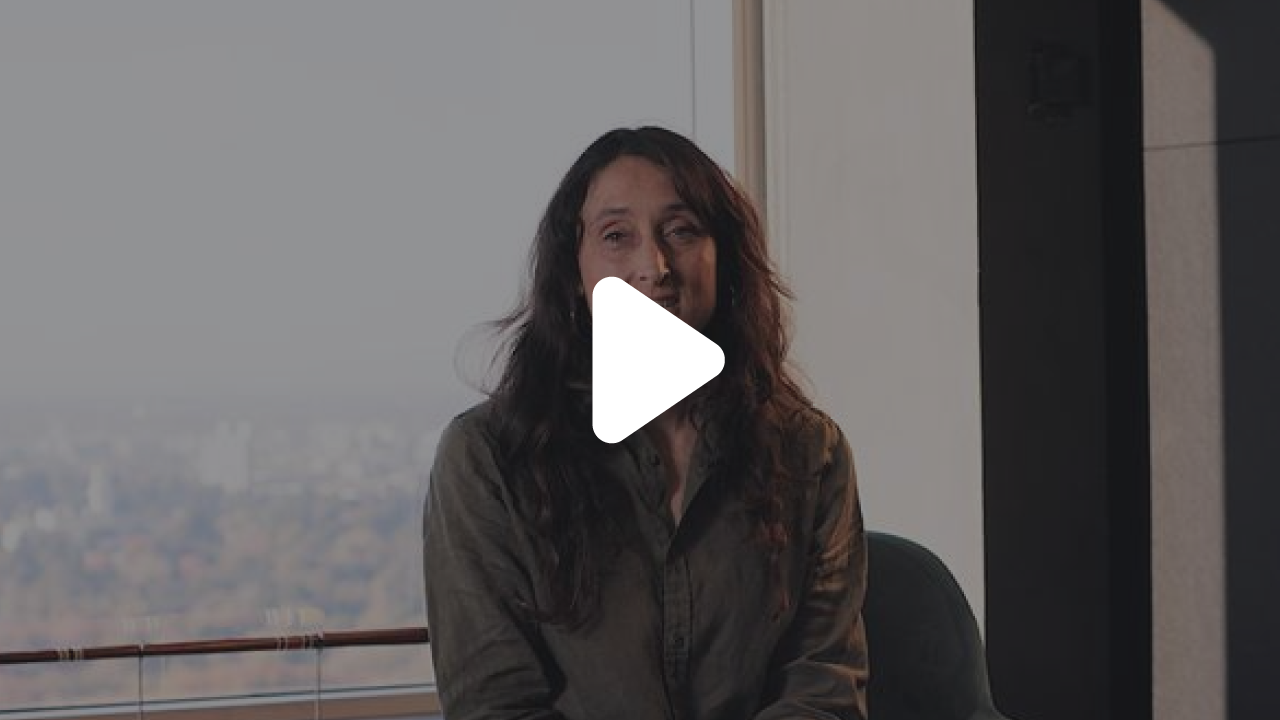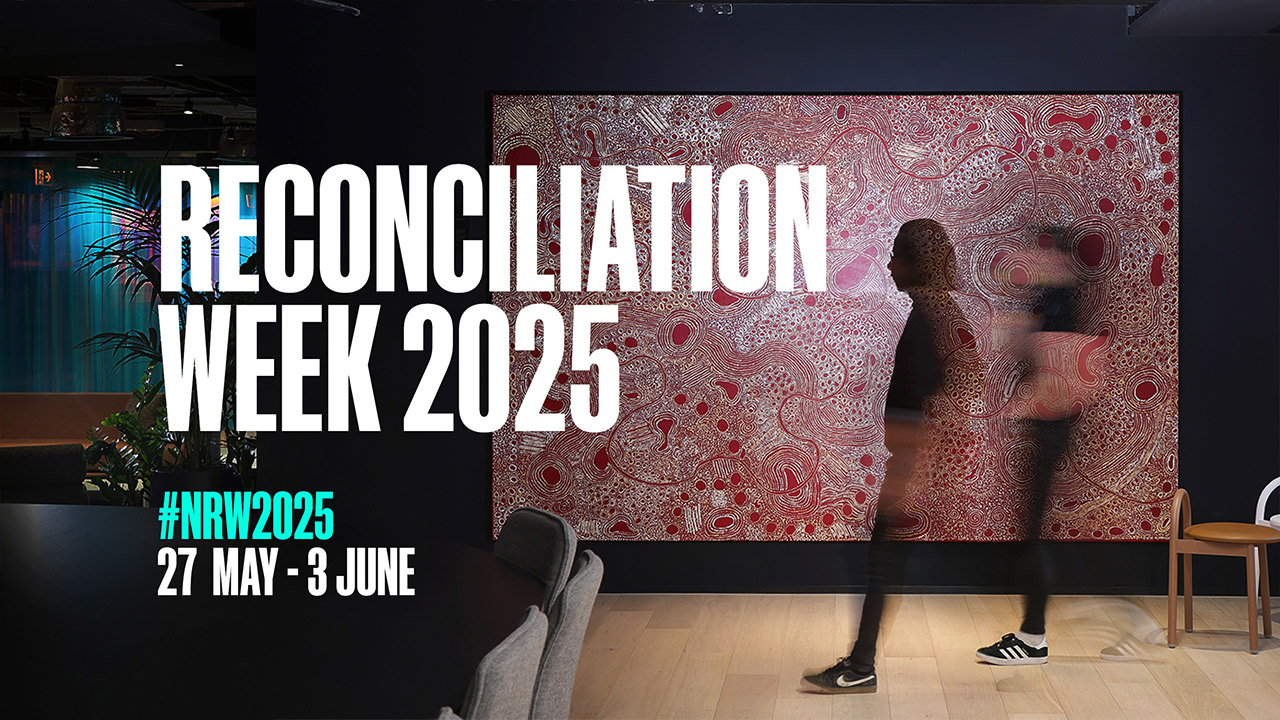
Share this story
At Kapitol we recognise that we each have an important role to play when it comes to reconciliation. In playing our part, we collectively build relationships and communities that value Aboriginal and Torres Strait Islander peoples, histories, cultures, and futures.
This year’s National Reconciliation Week will kick-off on May 27 – June 3 with the theme Bridging Now to Next reflecting the ongoing connection between past, present and future.
A walk around our new Head Office not only delivers some breathtaking views of the ancestral lands and waterways of the Wurundjeri people, but also an immediate recognition of the importance we place on Reconciliation and the connections we have with the culture, history and future of our First Nations people.
Artworks and meeting rooms throughout Kapitol’s Head Office feature key elements of our place and environment as told and visualised through First Nations artists’ eyes. For those wondering, here’s a lowdown on what they represent and the stories behind their creation:
Yam Seed Dreaming, Jeannie Mills Pwerle, 2023
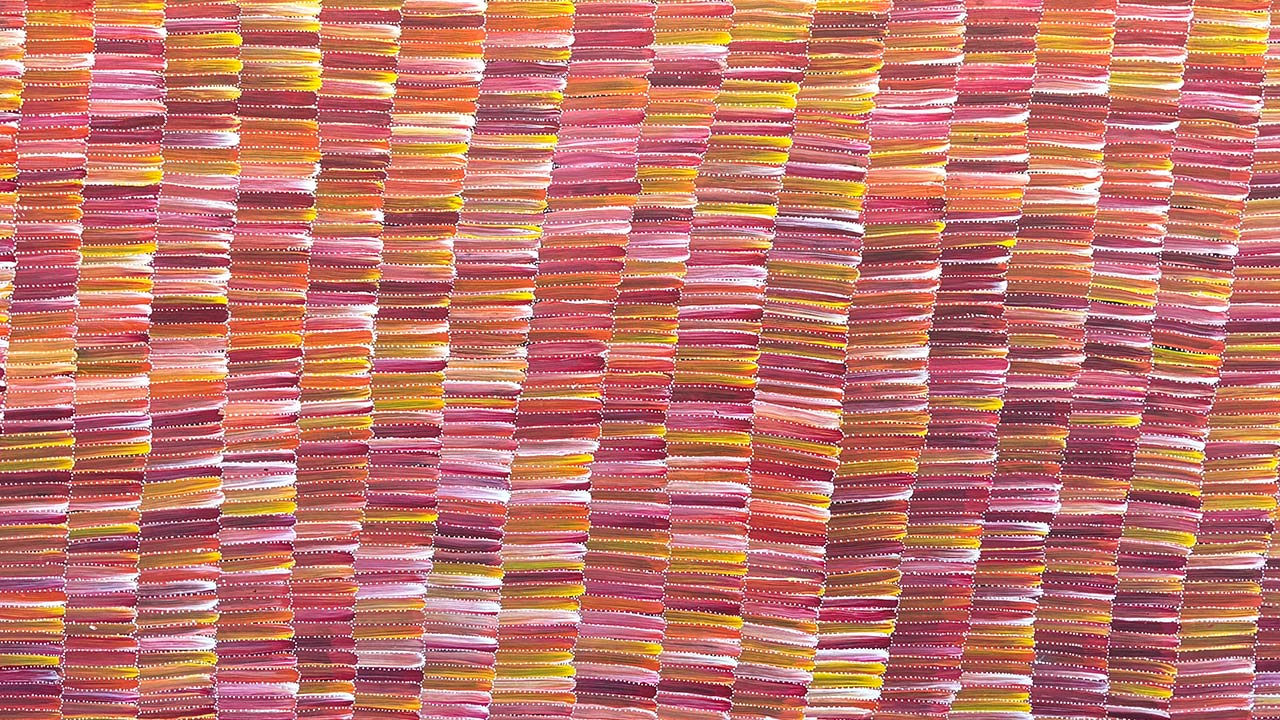
Born in 1965, Jeannie is an esteemed Aboriginal artist from the Utopia Region, 350km north-east of Alice Springs. Yam Seed Dreaming visualises the importance of the Anaty (Bush Yam), Anemangkerr (Bush Melon), Akarley (Northern Wild Orange). In the Dreamtime Ancestral Beings walked through the desert, alone or in groups, teaching law and ceremony to Aborigines living at isolated camps. The artwork tells the story of Yala: a yam ancestor who travelled throughout the desert in his human form, creating increased centres of wild bush potatoes in the form of sweet yams. One of the main centres was at a place called Yaltjiyaal, west of Alice Springs. When Yala felt too tired to continue living he lay down at this place and changed into a yam, sending out roots from which tubers eventually grew in all directions, feeding the people for generations to come. When not painting, Jeannie lives a traditional life at Utopia as a ngangker (traditional healer), providing advice and bush medicines to her community.
My Country, Rayleen Price Pula
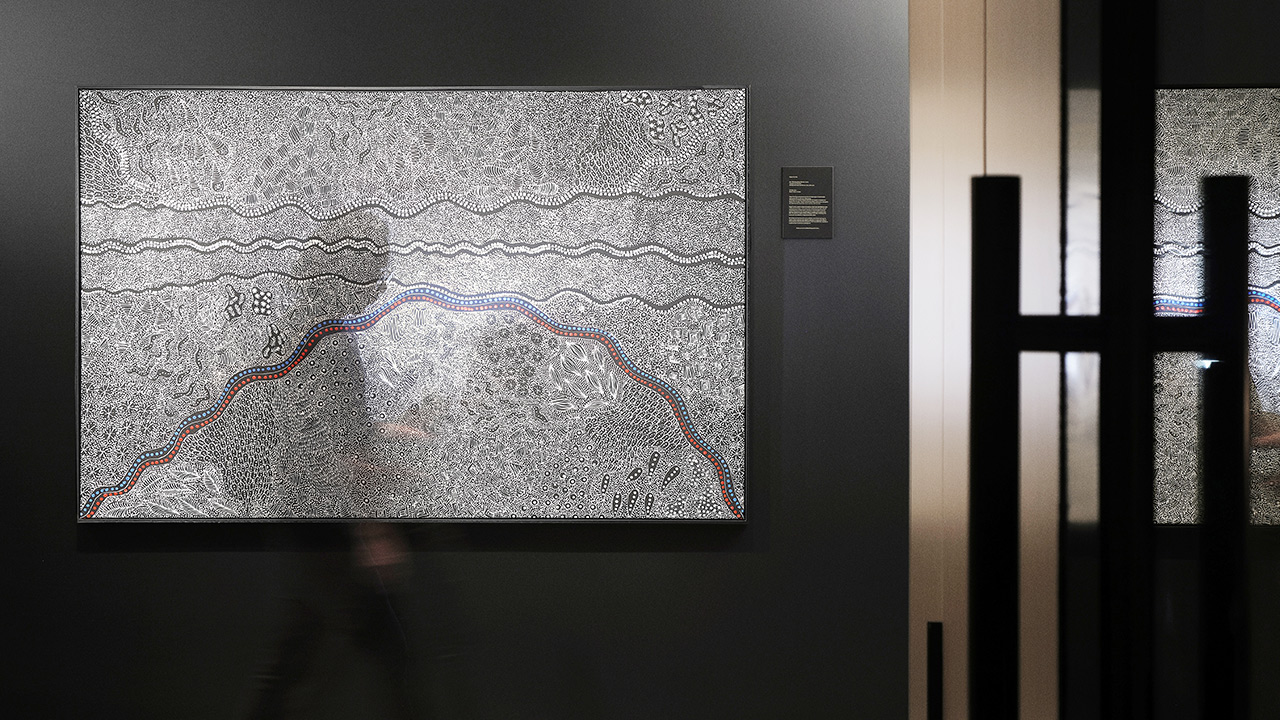
Another highly distinguished artist from the Utopia region, Rayleen’s My Country reflects a Dreaming of Bush Medicine passed down to her by her mother, renowned artist Margaret Price Penangke. The piece features seeds found in the hills of her country and given to people who are sick and too young children for immunity. Rayleen's work includes intricate dot paintings that narrate the rich cultural heritage of her people. Her dedication to her craft has solidified her reputation as a significant figure in contemporary Aboriginal art. She was a finalist in the 25th Telstra National Aboriginal and Torres Strait Islander Art Awards in 2008.
Ngayuku Ngura – My Country, Janie Kulyuru, 2023
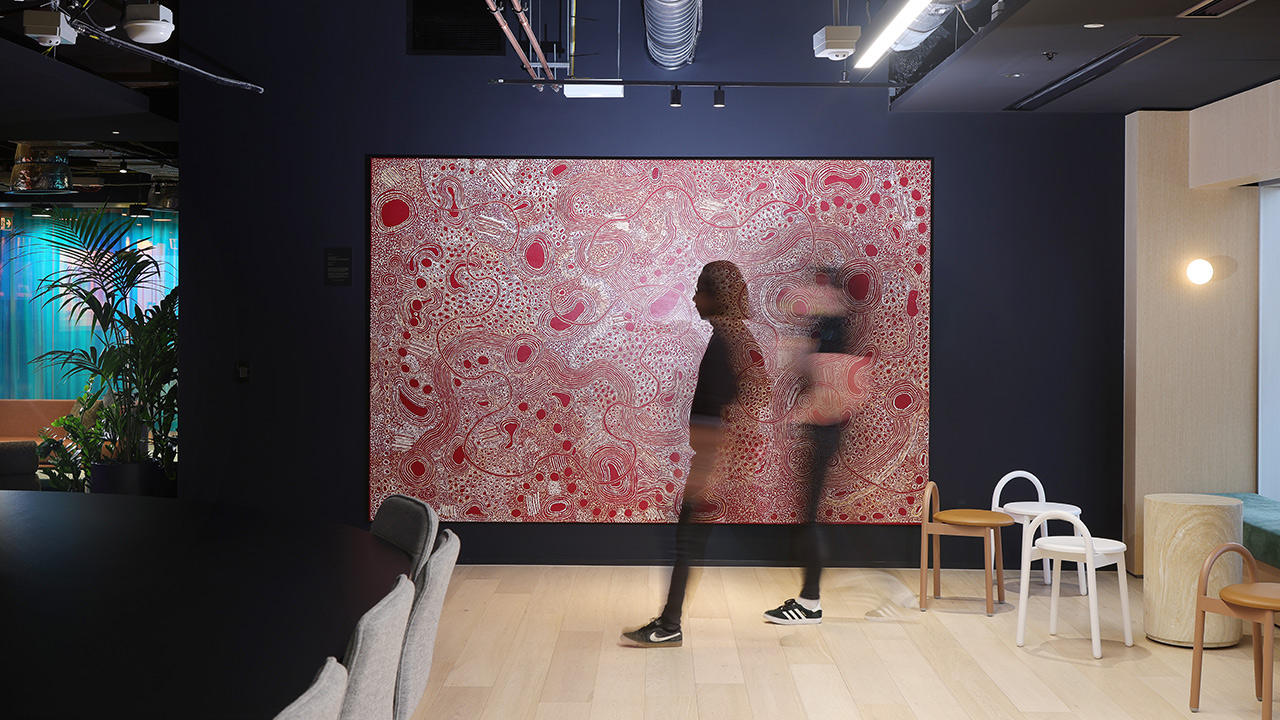
Janie is an incredibly talented artist whose father's country is Aparatjara, Western Australia, and her mother's country is Watarru, South Australia. In this painting Janie Kulyuru has painted her parents’ respective countries and the tjukurpa that animates them. Janie recounts the stories of her Tjamu’s (Grandfather’s) home at Watarru, capturing the journey of Minyima Tjuta (Many Women) as they travel across the landscape looking for bush tucker and digging for water. The long winding lines that move across the canvas represent inma, capturing the songlines of the ladies as they sing and dance across the landscape. After attending school in Adelaide, Janie moved to Amata to live with her family. Janie specialised in batik before beginning to paint on canvas. Her artworks often depict her mother's Creation story, Tjukurpa Waru, or fire story, and she paints alongside her sister Munu Kulyuru.
Grandmother’s Country and Seven Sisters Sleeping, Gabriella Possum Nungurrayi, 2006
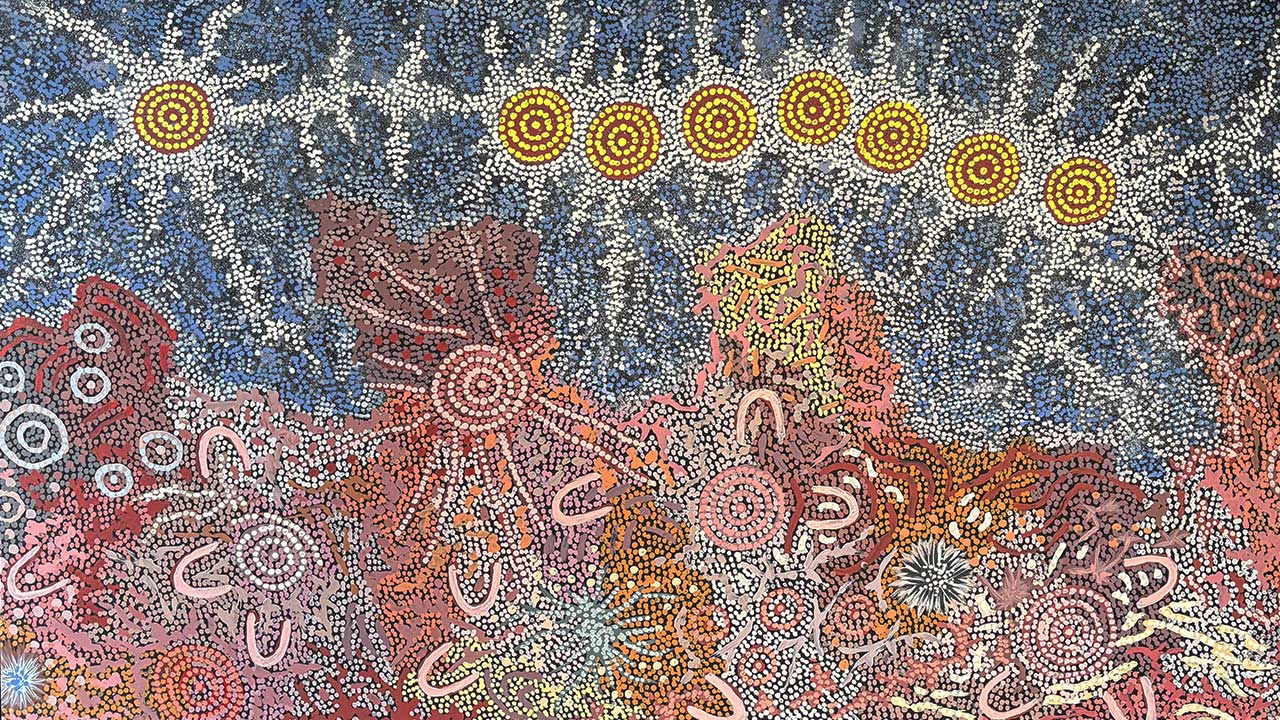
Gabriella Possum Nungurrayi is the daughter of Clifford Possum, one of Aboriginal art's most important artists. Her career has been impressive; her art was projected onto the Sydney Opera House in 2016, two years after it appeared on a Melbourne art tram, and she has also painted in the foyer of the United Nations. In 2008 a 20-metre installation of her Grandmother's Country was incorporated into Jamie Durie’s gold-prize-winning Chelsea Flower Show exhibit in the UK. That painting, presented to Queen Elizabeth, now hangs in the royal collection, alongside a work by her famous father. In this painting Gabriella depicts motifs that give symbolic form to tribal women engaged in cultural activities in a desert environment known as Yuelamu, which the women inherited from their Ancestral Grandmother, who travelled to this Anmatyerre site in the Tanami Desert during the Dreamtime, at Creation.
Represented as symbolic U-shapes, the women are shown in different areas collecting wild growing bush food, which is given form through star-like shapes that represent berry bushes, while clusters of encased small dots and large dots serve to represent various types of berries and bush plums that the women collect. The red fire-like motif represents the women’s campfire and ceremonial site where the women gather for ceremony and engage in ritual song and dance and create body art and sand paintings, which the concentric circles in this work depict and double to act as specific sites where bush food is in plenty. Rain nourishes the desert and is captured through the white dotted motifs, which also serves to double as pipe-clay used as paint in the ritual life of Yuelamu’s women, who follow their Ancestral Grandmother’s example in her home country, which is the subject of this work.
This year’s National Reconciliation Week will kick-off on May 27 – June 3 with the theme Bridging Now to Next reflecting the ongoing connection between past, present and future.
A walk around our new Head Office not only delivers some breathtaking views of the ancestral lands and waterways of the Wurundjeri people, but also an immediate recognition of the importance we place on Reconciliation and the connections we have with the culture, history and future of our First Nations people.
Artworks and meeting rooms throughout Kapitol’s Head Office feature key elements of our place and environment as told and visualised through First Nations artists’ eyes. For those wondering, here’s a lowdown on what they represent and the stories behind their creation:
Meeting Rooms
We have four meeting rooms that have been proudly named using Wurundjeri Woi-wurrung language and phrases, each with a strong relevance to how we work, engage and meet as people in our daily work at Kapitol:- Boonde-mak is the Woi-wurrung meaning for ‘uniting to strengthen relationships’
- Loorenge-gat is the Woi-wurrung meaning for ‘guidance throughout’
- Bangung magali is the Woi-wurrung meaning for ‘gather in this place’, and
- Kirrip is the Woi-wurrung meaning for ‘friend’.
Artworks
The selection of paintings around Head Office represent a deep connection with health, wellbeing, food and nature. Created to tell Dreamtime stories, Kapitol’s collection includes the following outstanding pieces of Indigenous art:Yam Seed Dreaming, Jeannie Mills Pwerle, 2023

Born in 1965, Jeannie is an esteemed Aboriginal artist from the Utopia Region, 350km north-east of Alice Springs. Yam Seed Dreaming visualises the importance of the Anaty (Bush Yam), Anemangkerr (Bush Melon), Akarley (Northern Wild Orange). In the Dreamtime Ancestral Beings walked through the desert, alone or in groups, teaching law and ceremony to Aborigines living at isolated camps. The artwork tells the story of Yala: a yam ancestor who travelled throughout the desert in his human form, creating increased centres of wild bush potatoes in the form of sweet yams. One of the main centres was at a place called Yaltjiyaal, west of Alice Springs. When Yala felt too tired to continue living he lay down at this place and changed into a yam, sending out roots from which tubers eventually grew in all directions, feeding the people for generations to come. When not painting, Jeannie lives a traditional life at Utopia as a ngangker (traditional healer), providing advice and bush medicines to her community.
My Country, Rayleen Price Pula

Another highly distinguished artist from the Utopia region, Rayleen’s My Country reflects a Dreaming of Bush Medicine passed down to her by her mother, renowned artist Margaret Price Penangke. The piece features seeds found in the hills of her country and given to people who are sick and too young children for immunity. Rayleen's work includes intricate dot paintings that narrate the rich cultural heritage of her people. Her dedication to her craft has solidified her reputation as a significant figure in contemporary Aboriginal art. She was a finalist in the 25th Telstra National Aboriginal and Torres Strait Islander Art Awards in 2008.
Ngayuku Ngura – My Country, Janie Kulyuru, 2023

Janie is an incredibly talented artist whose father's country is Aparatjara, Western Australia, and her mother's country is Watarru, South Australia. In this painting Janie Kulyuru has painted her parents’ respective countries and the tjukurpa that animates them. Janie recounts the stories of her Tjamu’s (Grandfather’s) home at Watarru, capturing the journey of Minyima Tjuta (Many Women) as they travel across the landscape looking for bush tucker and digging for water. The long winding lines that move across the canvas represent inma, capturing the songlines of the ladies as they sing and dance across the landscape. After attending school in Adelaide, Janie moved to Amata to live with her family. Janie specialised in batik before beginning to paint on canvas. Her artworks often depict her mother's Creation story, Tjukurpa Waru, or fire story, and she paints alongside her sister Munu Kulyuru.
Grandmother’s Country and Seven Sisters Sleeping, Gabriella Possum Nungurrayi, 2006

Gabriella Possum Nungurrayi is the daughter of Clifford Possum, one of Aboriginal art's most important artists. Her career has been impressive; her art was projected onto the Sydney Opera House in 2016, two years after it appeared on a Melbourne art tram, and she has also painted in the foyer of the United Nations. In 2008 a 20-metre installation of her Grandmother's Country was incorporated into Jamie Durie’s gold-prize-winning Chelsea Flower Show exhibit in the UK. That painting, presented to Queen Elizabeth, now hangs in the royal collection, alongside a work by her famous father. In this painting Gabriella depicts motifs that give symbolic form to tribal women engaged in cultural activities in a desert environment known as Yuelamu, which the women inherited from their Ancestral Grandmother, who travelled to this Anmatyerre site in the Tanami Desert during the Dreamtime, at Creation.
Represented as symbolic U-shapes, the women are shown in different areas collecting wild growing bush food, which is given form through star-like shapes that represent berry bushes, while clusters of encased small dots and large dots serve to represent various types of berries and bush plums that the women collect. The red fire-like motif represents the women’s campfire and ceremonial site where the women gather for ceremony and engage in ritual song and dance and create body art and sand paintings, which the concentric circles in this work depict and double to act as specific sites where bush food is in plenty. Rain nourishes the desert and is captured through the white dotted motifs, which also serves to double as pipe-clay used as paint in the ritual life of Yuelamu’s women, who follow their Ancestral Grandmother’s example in her home country, which is the subject of this work.
Latest News
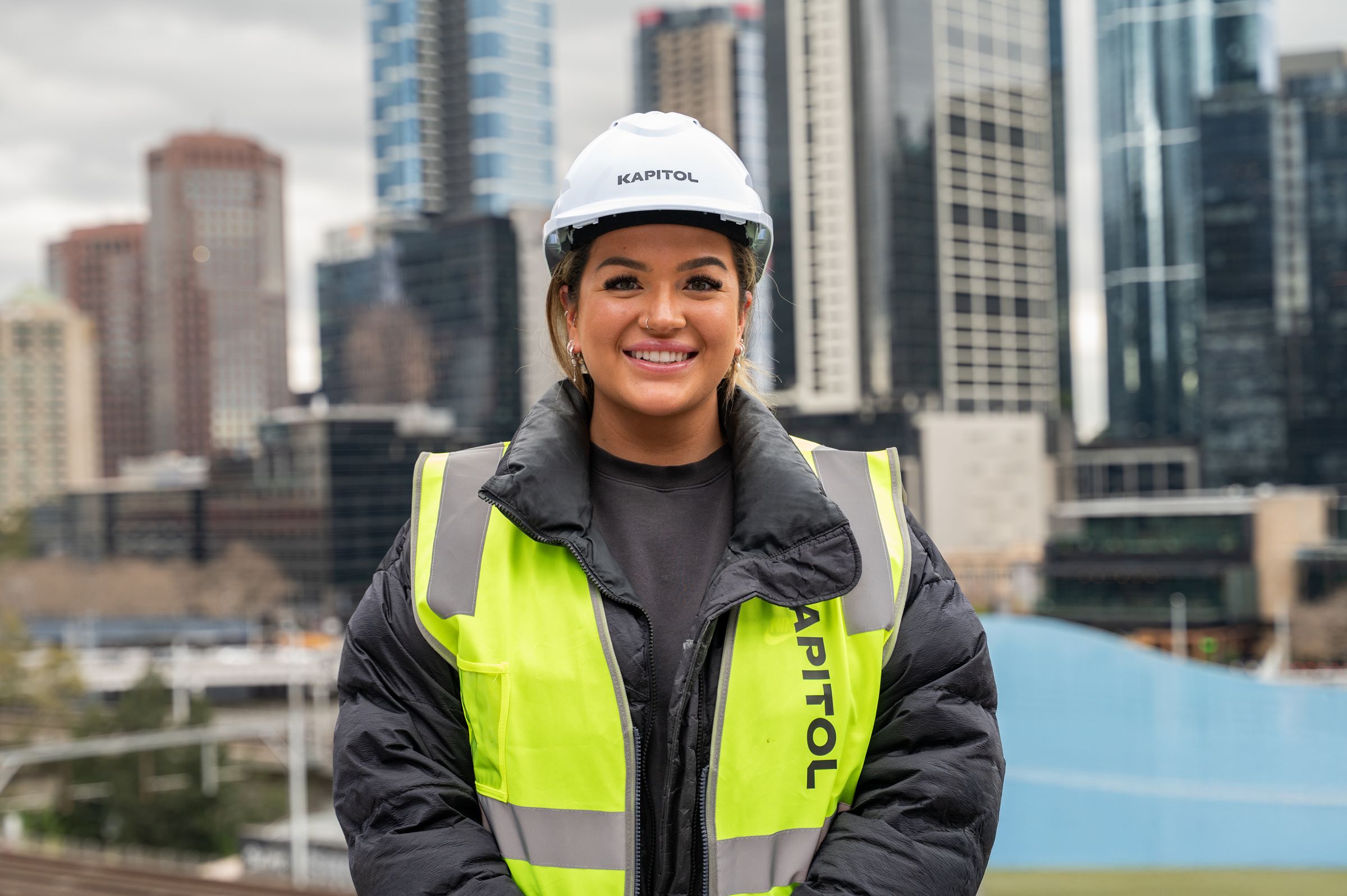
I am Kapitol: Maddy Woolrich
Maddy Woolrich has become Kapitol’s first graduate to step into an Assistant Site Supervisor role, read more to discover how she's been supported with this.

Kapitol Projects Finalists in Urban Developer Awards 2025
Kapitol's commercial & residential construction projects, Scape & Maison Bâtard, are finalists in The Urban Developer Awards 2025 for industry excellence.

Kapitol's New Construction Trade Partner Framework
As one of Australia's fastest-growing construction firms, Kapitol is excited to announce the launch of its new Trade Partner Engagement Framework.

